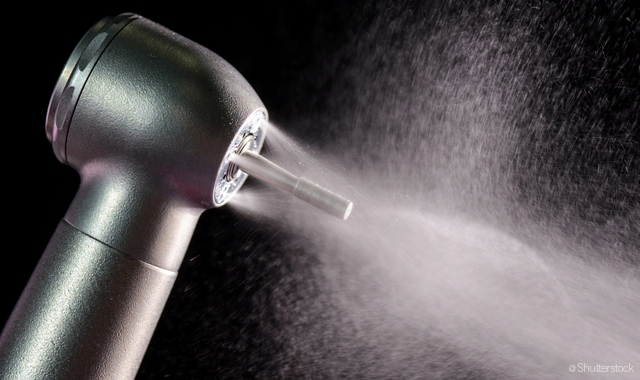New discovery could reduce need for dental drilling
The days of the dreaded dental drill-and-fill as the standard solution for tooth decay may be numbered if a discovery by a Creighton University School of Dentistry professor continues to advance.

The days of the dreaded dental drill-and-fill as the standard solution for tooth decay may be numbered if a discovery by a Creighton University School of Dentistry professor continues to advance.
Douglas Benn, D.D.S., Ph.D., has created a simple diagnostic liquid solution that can be applied to the surface of a patient’s teeth prior to a dental X-ray and which will help show dentists whether a tooth has cavitated decay or is pre-cavity. The diagnostic liquid will help dentists to more readily see cavitated decay on a standard X-ray and will also allow the dentist to use recently developed topical products to arrest tooth decay at an early stage, thereby preserving healthy tooth structure and utilizing a simple, pain-free method of detection and treatment, without anesthesia or drilling.
Dental caries - otherwise known as tooth decay - is the most common infection in the world and probably the one producing the most anxiety in potential dental patients. Caries goes through two stages: an initial non-cavitated state where decay can stop and no filling is needed, and a later cavitated state where a filling is often needed to stop decay from progressing.
Currently, dentists do not have a test to determine the difference between the two states, and this leads to the standard treatment: a drilling and a filling. But decay doesn’t automatically mean a cavity, and the filling cure can often be more trouble than it’s worth.
“Most dentists see decay and they go to the drill and the filling,” said Benn, professor and director of oral and maxillofacial radiology. “Once a tooth is filled, it leads to a repair-destruction cycle for the rest of the patient’s life.”
Trending research: New research discovers way to eliminate needles for dental anesthetic
Benn said American Dental Association data indicate some two-thirds of fillings are replacements, meaning the treatment, historically, needs to be repeated, and can cost a patient an average of $2,000 per filled tooth over a lifetime. With the use of the diagnostic liquid solution, he estimated 50 percent of cases resulting in dental fillings today could be delayed or avoided, with other recently developed treatments deployed to stave off cavities.
And while the diagnostic liquid can help ward off the drill, it can also help dentists pick up more infection that could otherwise go unnoticed and also aid in the classification of tooth decay.
This article has been reprinted from materials provided by Creighton University. It has been edited for content and length.
Episode 31: Dentsply Sirona Implant Announcements
September 30th 2021DPR’s Editorial Director Noah Levine sat down with Gene Dorff, Dentsply Sirona’s group vice president of implants and Dr. Dan Butterman to review several big announcements the company made in the arena of implants during Dentsply Sirona World 2021 in Las Vegas.